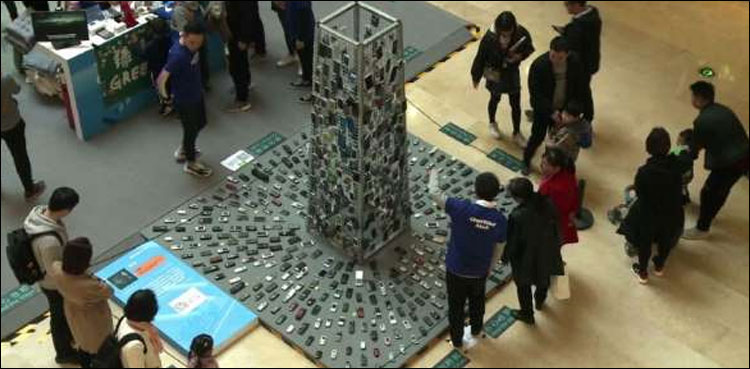
A Chinese artist on Saturday unveiled a sculpture made of discarded mobile phones and shaped like a cell tower in a bid to highlight the problem of electronic waste.
The phones were rigged to a metal frame and synchronised so their screens would flash in various colours.
“The inspiration of my tower comes from the Tower of Babel in the Bible,” artist Shen Bolun told AFP, referring to the origin story explaining why people speak different languages.
Displayed in a busy shopping mall in Beijing, the sculpture attracted scores of curious bystanders who stopped to take photos of the exhibit.
“I originally thought environmental protection is waste sorting, but I didn’t realise cellphones could be recycled and used again,” said primary school student Li Jiaxing, who was viewing the artwork with his mother.
“After seeing this tower, I decided to donate my old cellphone here to make use of its remaining value.”
China’s waste from computers, mobile phones, and other electronics will reach 15.4 million tonnes by 2020, said environmental group Greenpeace, which organised the display.
As a leading manufacturer and consumer of electronic goods, China was a logical place to launch an e-waste recycling and reduction campaign, the group said.
Old electronic devices contain large amounts of metal that have economic value, said Greenpeace project manager Jiang Zhuoshan.
“If these metals are recycled, we can reduce mining and damaging the environment,” she added.
But there are still many barriers — many are either unfamiliar with the recycling procedures or have privacy concerns about the prospect of someone else handling their personal devices.
The post Cell phone sculpture highlights China e-waste problem appeared first on ARYNEWS.
from ARYNEWS https://ift.tt/2FKQiMK
Comments
Post a Comment